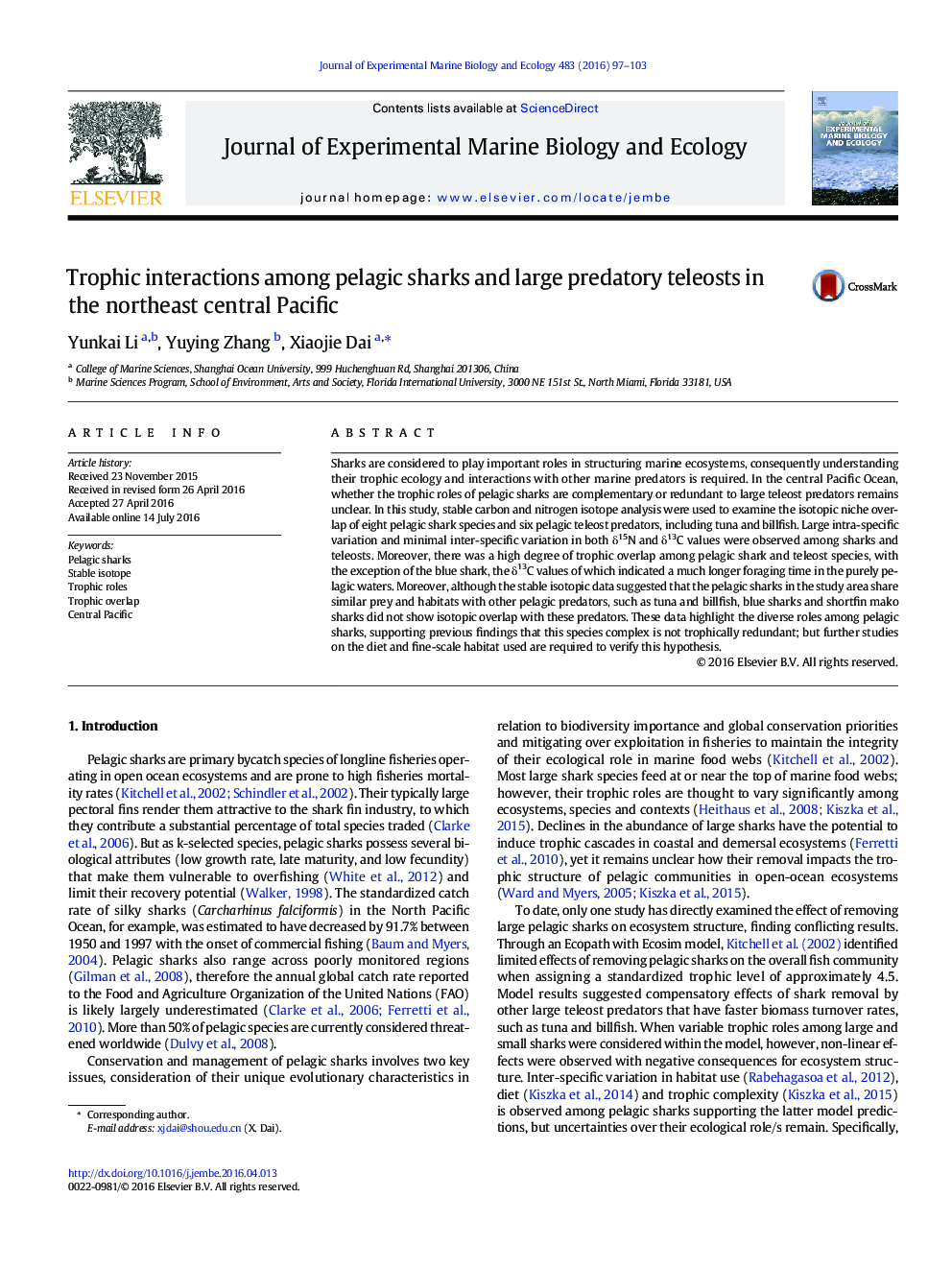| Article ID | Journal | Published Year | Pages | File Type |
|---|---|---|---|---|
| 4395221 | Journal of Experimental Marine Biology and Ecology | 2016 | 7 Pages |
•The isotopic of 8 pelagic shark species and other 6 pelagic predators were described.•There was relatively high dietary overlap among shark species, expect for blue shark.•Blue sharks and shortfin mako sharks did not show isotopic overlap with other predators.•This study increased our understanding of the feeding ecology of pelagic sharks.
Sharks are considered to play important roles in structuring marine ecosystems, consequently understanding their trophic ecology and interactions with other marine predators is required. In the central Pacific Ocean, whether the trophic roles of pelagic sharks are complementary or redundant to large teleost predators remains unclear. In this study, stable carbon and nitrogen isotope analysis were used to examine the isotopic niche overlap of eight pelagic shark species and six pelagic teleost predators, including tuna and billfish. Large intra-specific variation and minimal inter-specific variation in both δ15N and δ13C values were observed among sharks and teleosts. Moreover, there was a high degree of trophic overlap among pelagic shark and teleost species, with the exception of the blue shark, the δ13C values of which indicated a much longer foraging time in the purely pelagic waters. Moreover, although the stable isotopic data suggested that the pelagic sharks in the study area share similar prey and habitats with other pelagic predators, such as tuna and billfish, blue sharks and shortfin mako sharks did not show isotopic overlap with these predators. These data highlight the diverse roles among pelagic sharks, supporting previous findings that this species complex is not trophically redundant; but further studies on the diet and fine-scale habitat used are required to verify this hypothesis.
